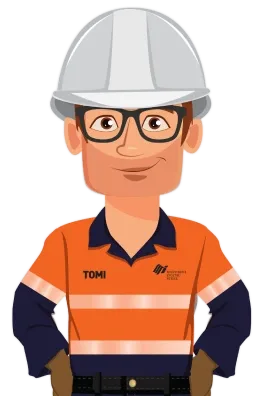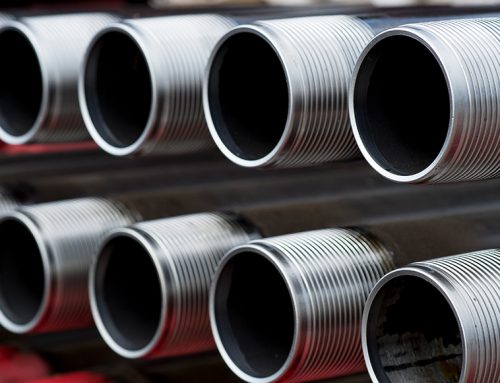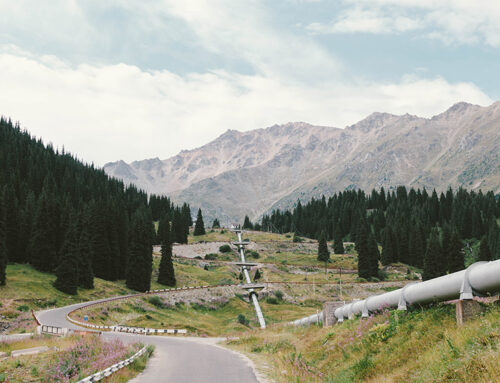
Decarbonisation refers to the process of reducing human-generated CO₂ emissions through innovative solutions and environmentally sound practices. The ultimate goal is to eliminate them completely, with the 2015 Paris Agreement stipulating a goal of net carbon neutrality by 2050. This doesn’t mean that CO₂ will no longer be produced, but that its production will be limited and that, when it is produced, it will be contained so that emissions are no longer released into the environment.
The motivation behind this objective is the reduction and elimination of global greenhouse gas emissions from industrial processes, minimising the risk of global temperatures continuing to rise. The OCTG industry has a significant role to play in this effort, and the collective action of major industry players has the potential to massively support the decarbonisation effort.
Carbon capture, utilisation and storage (CCUS)
CCUS is a process that involves capturing carbon dioxide emissions from production activities and either storing them underground or using them for other purposes. The process has three main steps:
Step 1
Capturing CO₂ emissions from industrial processes, such as power plants or manufacturing facilities, and using separation technology that isolates the CO₂ from other gases.
Step 2
Transporting the captured CO₂ to a storage site via pipelines, ships, or trucks.
Step 3
Storing the CO₂ in a geological formation, such as a depleted oil or gas reservoir, a deep saline aquifer, or a coal seam, and monitoring it to ensure that it remains underground.
CCUS has the potential to significantly reduce greenhouse gas emissions from industrial processes, particularly in industries where other decarbonisation technologies may not be feasible.
CCUS and OCTG
A major way that OCTG can contribute to the decarbonisation effort is by developing and enabling the use of CCUS technologies. This primarily involves creating and producing reliable and impermeable methods of transporting and injecting CO₂ into underground wells. The pipes involved in this process must be durable enough to withstand a variety of pressure and temperature levels.
Moreover, they need to be able to hold up against highly corrosive environments. This is because the risk of CO₂ corrosion is a significant concern when water, oxygen, and other impurities are present in the CO₂ stream. OCTG manufacturers have the specialised knowledge to test if their materials function under these demanding conditions and develop innovative solutions as their understanding of this emerging industry increases.
Steel, CCUS and decarbonisation
While OCTG will play a key role in the ongoing development and production of the infrastructure used to support CCUS, changes to the way OCTG products are manufactured will also contribute to the overall decarbonisation effort.
The steel industry, which produces OCTG, is a significant source of greenhouse gas emissions, but the industry is exploring ways to reduce emissions through the use of renewable energy, hydrogen, and other low-carbon technologies. In their review of the steel industry and its transition to net zero, international consulting firm McKinsey identifies a number of ways that steel manufacturers can decarbonise their operations.
For more information about steel production and metallurgy, read our 101 Guide to OCTG Manufacturing.
Optimising blast furnace – basic oxygen furnace (BF-BOF) plants
Almost 75% of crude steel is made using iron ore in BF-BOF plants. This process produces CO₂ emissions through the burning of coking coal, which is used as a reducing agent. These emissions can be cut back by maximising the iron content of the raw minerals used in steel production and making other adjustments to drive energy efficiency.
In the near future, CCUS infrastructure will also be available to these plants, enabling them to further reduce their emissions. Though still in the development stage, this option will mean that BF-BOF plants can continue operating while also aligning their production processes with decarbonisation objectives. In doing so, they can avoid the costs and emissions associated with broader facilities and technological overhaul.
Expanding the use of electric arc furnace (EAF) facilities
Another way that steelmakers can contribute to the decarbonisation effort is to replace BF-BOF plants with EAF and direct reduced iron (DRI) EAF facilities. These facilities, respectively, use scrap metal and direct reduced iron as their primary input materials. Both methods have a lower carbon footprint than BF-BOF steelmaking, with DRI-EAF being the most efficient and producing a higher-quality product.
Further, by using green hydrogen to power the reduction process that creates DRI, alongside EAFs that are also powered by renewable energy, steelmakers will be able to heavily reduce or even completely cut out their CO₂ emissions. Building new steel plants that are equipped to function in this manner will likely be the leading force in decarbonising the steel-making industry, in turn promoting the decarbonisation of OCTG.
Are you in need of tubulars to support your decarbonisation efforts?
Browse our global Pipesales marketplace here.





